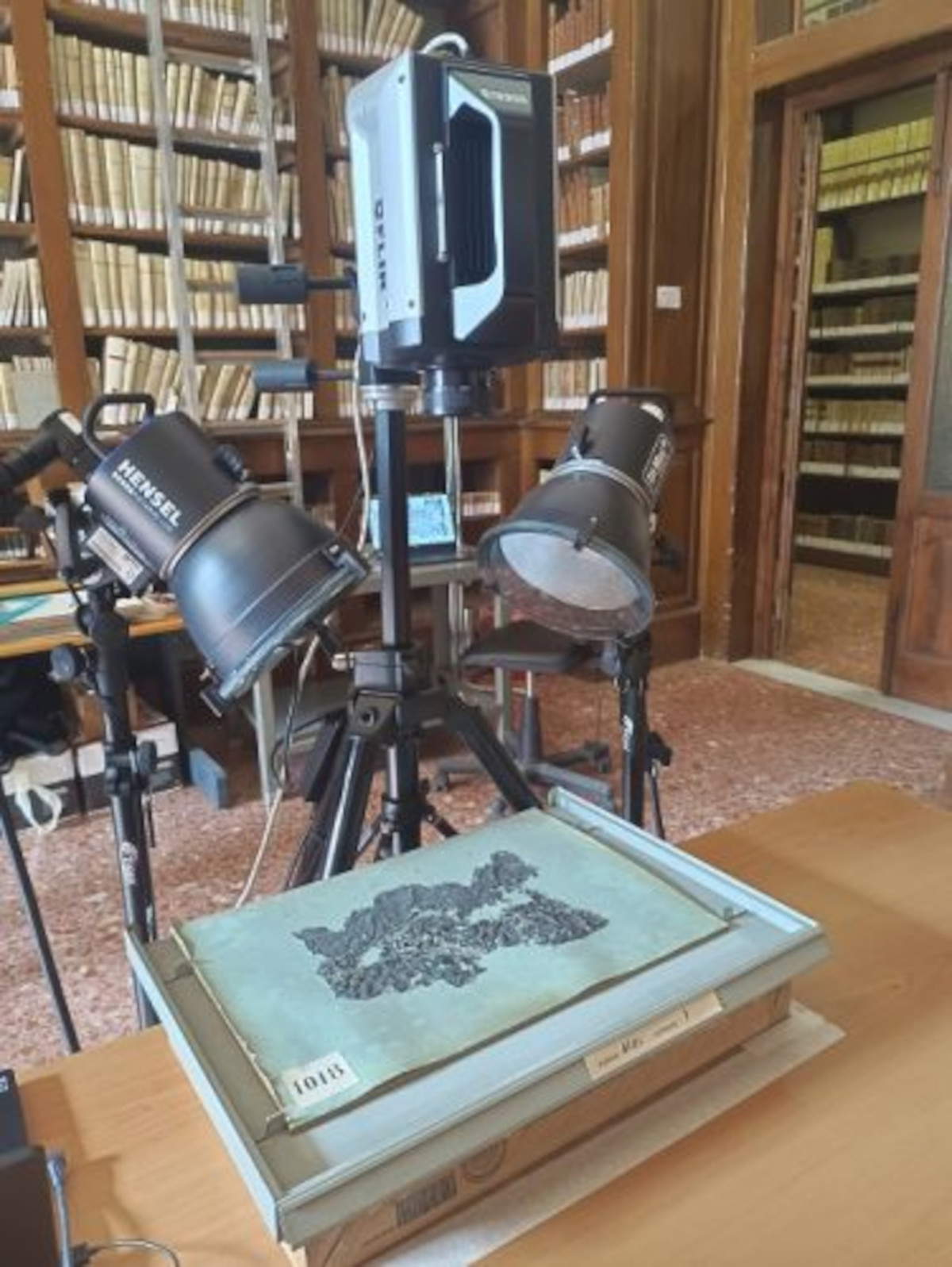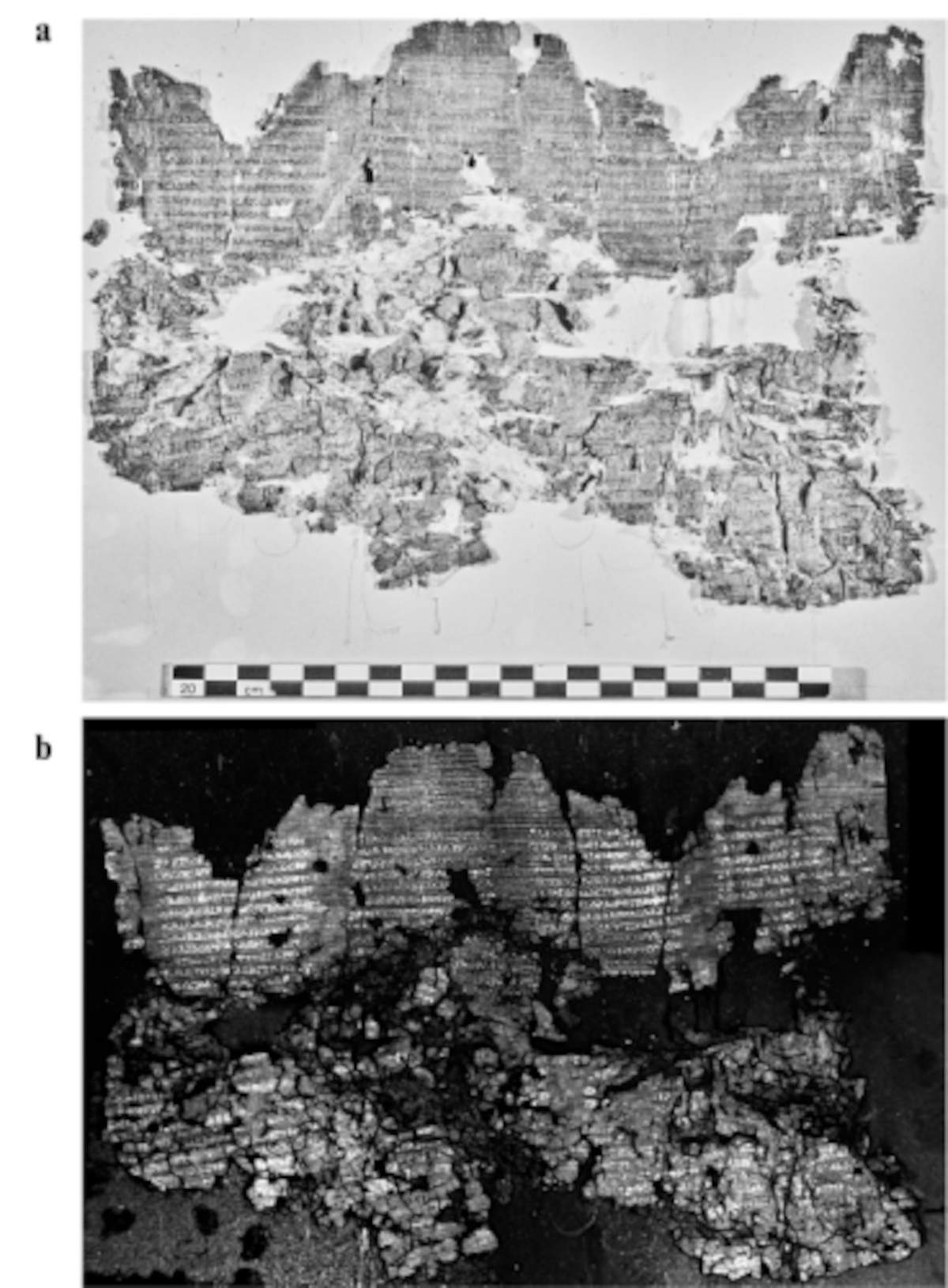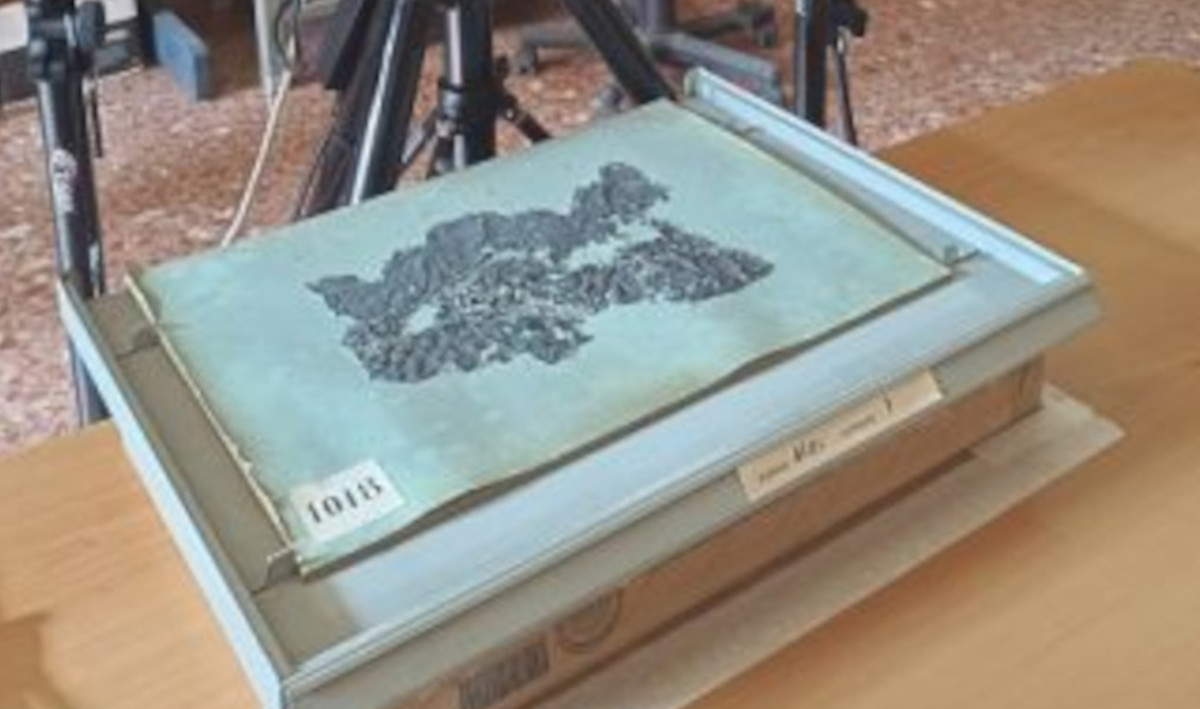A recent scientific investigation of the charred papyri from Herculaneum, kept at the “Vittorio Emanuele III” National Library in Naples, has brought to light new information about the figure of Zeno of Citius, founder of Stoicism, that offers a novel look at his existence. His physical frailty, probably due to a frugal diet, and the tendency toward isolation that drove him to avoid banquets, reinforce the image of an ascetic devoted to philosophical reflection. Stoicism, a philosophical current born in Athens around 300 B.C. by Zeno, teaches to live according to virtue, reason and nature, to achieve happiness through control of the passions and detachment from what cannot be controlled.
The research, published in the journal Scientific Reports published by Springer Nature, is part of the ERC Advanced Grant 885222-GreekSchools Project, coordinated by Graziano Ranocchia of the Department of Philology, Literature and Linguistics at the University of Pisa, and dedicated, among other objectives, to the diagnostic study of Herculaneum papyri.
The new findings are the result of the use of increasingly sophisticated analysis technologies. For the first time, a team from the Institute of Cultural Heritage Sciences (CNR-Ispc) and the Institute of Applied Sciences and Intelligent Systems “Eduardo Caianiello” (CNR-Isasi) applied active thermography to the papyri, a technique that made texts otherwise invisible to the naked eye, contained in various open scrolls, perfectly legible. These documents include historical-philosophical works of the highest value, such as the History of the Stoic School, the alleged History of the Pythagorean School, and the so-called History of the Epicurean School by Philodemus of Gadara (110-after 40 B.C.), the probable owner or custodian of the famous library discovered in the 18th century during Bourbon excavations at the Villa of the Papyri in Herculaneum.
Active thermography makes it possible to generate remarkable contrast between writing and charred support-similar to that obtained with short-wave hyperspectral imaging (SWIR)-and to derive valuable information for the preservation of artifacts, such as the structure of the papyrus weave or the gluing points between the papyrus fragments and the supporting cardboard. The experiments were conducted through mobile laboratories at the Herculaneum Papyrus Workshop of the National Library in Naples, thanks to the collaboration between teams from CNR-Isasi and CNR-Ispc. The latter used portable instrumentation developed in the MUR PON IR SHINE project, supporting the MOLAB platform active in the E-RIHS-ERIC European research infrastructure.


The use of these technologies has made possible a new edition of Philodemus’ History of the Stoic School, edited by Kilian Fleischer of the University of Tübingen and a member of the GreekSchools project, which features a 10 percent increase in Greek text over the 1994 edition. This progress has deepened knowledge about the life and chronology of Zeno of Cytius, as well as other important later Stoic philosophers, including Chrysippus and Panezius, the latter known for spreading Stoicism in Rome.
Further significant discoveries come from two other papyri, recently reissued by researchers from the GreekSchools project. The new edition of papyrus PHerc. 1508, edited by Eleni Avdoulou, revealed 45 percent more Greek text than before and disproved the ancient interpretation of the work as a History of the Pythagorean School. Instead, the text would appear to deal with a history of medicine or, more precisely, a biography of Greek physicians, including Acrones of Agrigento, founder of the empirical school, and Euryphon of Knidos.
Finally, the papyrus PHerc. 1780, in the new edition edited by Carlo Pernigotti, which recovered about 30 percent additional text, turned out to be a collection of wills of members of the Epicurean school, and not a history of it, as previously believed. It is, in fact, the only documentary text in the entire Herculaneum collection.
“In Papyrus PHerc. 1018, containing the History of the Stoic School, Zeno of Citius’ famous work, the Republic, is described as morally objectionable because it recommends sexual and social practices considered embarrassing. Zeno, of Phoenician origin, is the object of ridicule for his poor command of the Greek language, a sign of the Greeks’ contempt for non-Greek-speaking foreigners,” explains Graziano Ranocchia. “It is also reported that he complained during a banquet or thermal bath that he was placed near the entrance, is accused of annoying the young people with his chatter and reproaches, and is mocked for his alleged inability to provide those present with a simple cauldron of hot water. It is noted, however, that upon his death, because of his great philosophical renown, he was given a solemn public funeral.” “At last we can have a set of perfectly readable images of various Herculaneum papyri with an acceptable contrast and resolution for their study, reading and edition, with significant relapses for our knowledge of moments and protagonists in the history of Greek philosophy,” he added.
“Non-invasive diagnostics of cultural heritage is being enriched by new advanced methods, increasingly applied in an integrated way, which allow visualizing otherwise inaccessible material characteristics,” explained Costanza Miliani, director of the CNR-Ispc. “In this context, active thermography, an imaging technique in the infrared domain, has proven particularly effective in the analysis of the charred papyri from Herculaneum. This approach makes it possible to acquire contrast signals between the carbonaceous ink and the papyrus support that has been heavily altered by carbonization, making texts visible that are almost completely illegible to the naked eye. This is a significant advance that opens up new perspectives both for the philological study of texts and for the conscious preservation of extremely fragile materials.”
“This result represents an important recognition for our optical diagnostics laboratories, particularly the Thermography and IR Imaging laboratory, which for years have been developing and applying innovative methodologies for the non-invasive investigation of cultural heritage,” continues Ivo Rendina, director of CNR-Isasi. “The application to the Herculaneum papyri demonstrates how advanced imaging techniques, appropriately adapted to the historical-archaeological context, can return to the scientific community and society a wealth of knowledge that has remained inaccessible until now, while at the same time helping to guide conservation strategies.”
“The GreekSchools Project,” adds Alessandro Lenci, director of the Department of Philology, Literature and Linguistics at the University of Pisa, “demonstrates the importance of a multidisciplinary approach to humanities research, a characteristic feature of much research conducted by our Department.”
“In the past, attempts to unwind and read the Herculaneum papyri have resulted in severe damage to the artifacts, whose extreme fragility always calls for due caution in the evaluation of analytical methods. The new technologies used by the team led by Prof. Ranocchia, allowing the reconstruction of large portions of text that were previously illegible without any deterioration of the papyri, therefore perfectly reconcile the fundamental needs of protection of these materials with the equally important needs of study and research,” concludes the director of the National Library of Naples, Silvia Scipioni. The participation of the National Library of Naples in the GreekSchools project together with the University of Pisa and the CNR sees it for the first time as a co-beneficiary of a project funded by the European Commission.
 |
| Recent investigation of Herculaneum papyri reveals new information about Zeno, founder of Stoicism |
Warning: the translation into English of the original Italian article was created using automatic tools. We undertake to review all articles, but we do not guarantee the total absence of inaccuracies in the translation due to the program. You can find the original by clicking on the ITA button. If you find any mistake,please contact us.